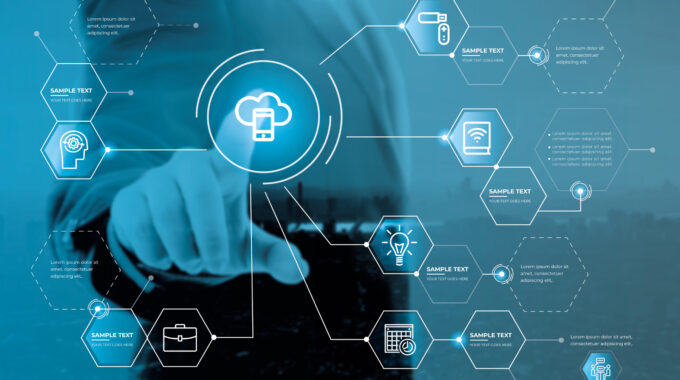Introduction In the dynamic landscape of small businesses, Point of Sale (POS) solutions emerge as…

Securing Retail Transactions: Best Practices for Point of Sale (POS) Systems
Introduction
In an age dominated by digital commerce, the security of retail transactions is paramount. This article explores the critical realm of retail transaction security, focusing on the best practices for Point of Sale (POS) systems.
The Landscape of Retail Transaction Security
Security breaches can inflict severe financial and reputational damage on retail establishments. Establishing a robust security framework is not merely an option but a necessity in the contemporary digital marketplace.
Encryption Protocols: Safeguarding Data in Transit
At the core of secure transactions lies encryption. Robust encryption protocols ensure that data transmitted between the POS system and servers remains indecipherable to potential threats. Industry-standard protocols such as SSL/TLS form the foundation of secure data transfer.
EMV Technology: Combatting Card Fraud
The adoption of EMV chip technology represents a significant stride in countering card-present fraud. Understanding the intricacies of EMV implementation and integrating it seamlessly into POS systems is crucial for transaction security.
Tokenization: Enhancing Data Security
Tokenization adds an additional layer of protection by substituting sensitive information with unique tokens. Even if a malicious actor intercepts data, the tokenized information is rendered meaningless without the corresponding tokenization system, providing an added safeguard against unauthorized access.
Secure User Authentication: Mitigating Insider Threats
User authentication is a linchpin in retail transaction security. Implementing robust authentication measures, such as biometrics or two-factor authentication, not only guards against external threats but also mitigates risks associated with insider breaches.
Regular Software Updates: Closing Vulnerabilities
Outdated software poses a significant risk. Regular updates, including security patches, are imperative. POS systems must be equipped with mechanisms to facilitate seamless updates, ensuring the incorporation of the latest security features.
End-to-End Security Audits: Proactive Vigilance
Regular security audits are akin to health check-ups for POS systems. Conducting comprehensive end-to-end security audits helps identify vulnerabilities before they can be exploited. Proactive vigilance is the key to staying one step ahead of potential threats.
Firewalls and Intrusion Detection Systems: Fortifying the Perimeter
Building a robust perimeter defence is essential. Firewalls and intrusion detection systems act as sentinels, monitoring network traffic and blocking unauthorized access attempts. A well-configured firewall is the first line of defence against external threats.
Data Backups and Recovery: Resilience in the Face of Threats
In the event of a security breach or system failure, robust data backup and recovery mechanisms are indispensable. Implementing regular backups and having a comprehensive recovery plan ensures business continuity even in the face of unforeseen challenges.
Employee Training: The Human Firewall
Employees often unwittingly become the entry point for cyber threats. Providing comprehensive training on security best practices, recognizing phishing attempts, and promoting a security-conscious culture turns employees into the first line of defence.
Compliance with Payment Card Industry Data Security Standard (PCI DSS)
Adherence to PCI DSS is mandatory for any business handling cardholder information. Ensuring that POS systems comply with these standards safeguards not only customer data but also shields the business from potential legal and financial repercussions.
Multi-Layered Authentication: Strengthening Access Controls
Deploying multi-layered authentication mechanisms enhances access controls. By requiring users to go through multiple verification steps, businesses add an extra layer of defence against unauthorized access to sensitive data.
Security Incident Response Plan: Readiness for Contingencies
In the ever-evolving landscape of cybersecurity, having a robust incident response plan is imperative. This plan outlines the steps to be taken in the event of a security incident, minimizing the impact and facilitating a swift recovery.
Mobile POS Security: Adapting to Changing Consumer Behaviour
As mobile transactions become increasingly prevalent, securing mobile POS systems is paramount. Implementing encryption, secure authentication, and regular updates are essential in safeguarding transactions conducted through mobile devices.
Collaboration with Cybersecurity Experts: Staying Ahead of Threats
The realm of cybersecurity is dynamic and ever-changing. Collaborating with cybersecurity experts and staying abreast of emerging threats ensures that POS systems are fortified against the latest tactics employed by malicious actors.
Conclusion
In a digital landscape fraught with potential threats, the security of retail transactions through POS systems is not a choice but a mandate. By implementing these best practices, businesses can fortify their defences, protect sensitive customer data, and instil confidence in the reliability and security of their retail transactions. As technology advances, so must our security measures, ensuring that the digital marketplace remains a safe and secure environment for businesses and consumers alike.




